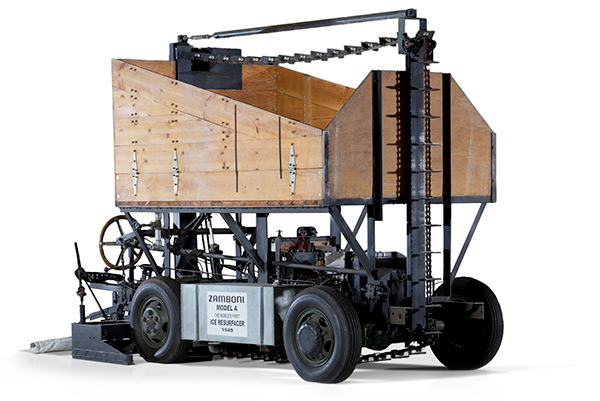- Products
- Resource Center
- About
- Contact
- Shop

In March of 1942, Frank bought a tractor and started experimenting. His first attempt – a machine built onto a sled towed behind a tractor – neither smoothed the surface nor picked up the “snow” adequately. However, Frank had another idea, and in 1947 he took a different approach: a self-propelled machine by which one person could accomplish a complete resurfacing operation. This attempt (Prototype No. 3) had only two-wheeled drive and was unsuccessful because of lack of traction on the ice and limited snow carrying capacity. Parts from this prototype were used in building a four wheel drive machine that would shave the ice, remove the shavings, wash and squeegee the ice, and hold snow in an elevated tank large enough to last for an entire resurfacing job. The adjustable blade was held firmly in the conditioner, thus keeping it from digging too far into the ice. By the summer of 1949, he was able to get a good sheet of ice consistently, and the “Model A Zamboni ice resurfacer” became a working reality.
The Model A introduced the “wash water” system, which washed the ice with recirculating water before applying the final coat of ice making water. Its wooden side was hinged so snow could be shoveled out or melted by overhead sprayers. Having achieved success with the invention of this machine, Frank applied for a patent and in 1953, Patent Application No. 93,478 was granted by the United States Patent and Trademark Office. Patent No. 2,642,679 was Frank’s basic and broadest patent, although it was not his first. The Model A was restored in 1998 and is on display at Paramount Iceland.